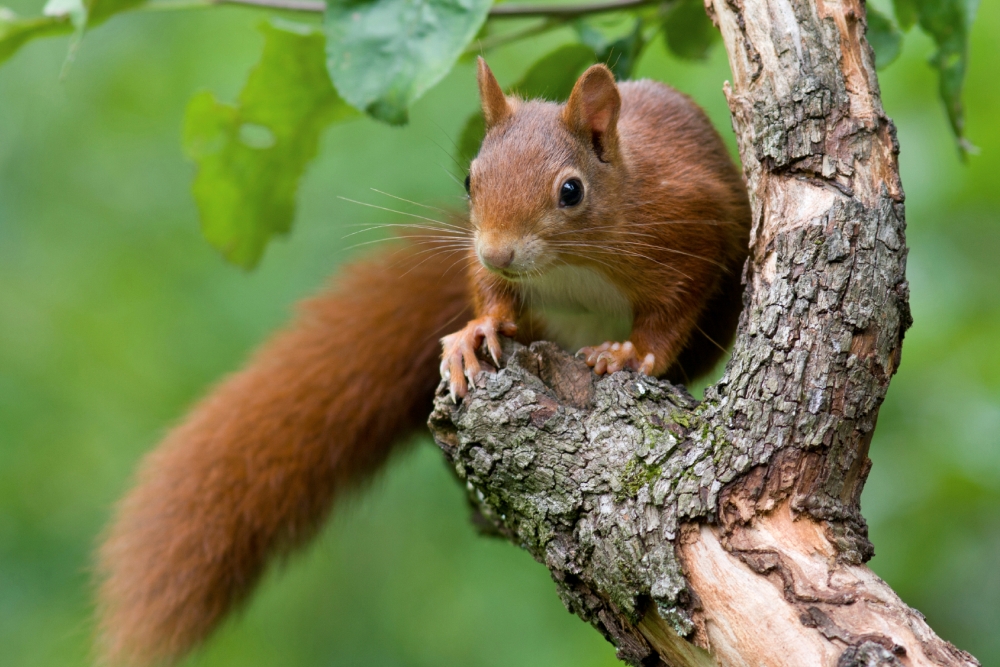Red squirrel

Status
Native, locally common in Scotland but rare in England and Wales
Population
287,000
Scientific name
Sciurus vulgaris
Red squirrels have a red-brown coat (sometimes appearing quite grey) and in winter, characteristic long, red tufts of fur on top of their ears. They spend almost all of their time in the tree canopy and rarely come down to the ground. High up in the branches, they build spherical nests (called dreys) from twigs and lined with moss, dried leaves or grass. They are solitary animals that are active during the day, particularly at dawn and dusk. Red squirrels can store little fat and need to eat regularly; they spend up to four-fifths of the time that they are active, feeding and foraging. They have dextrous front feet, which they use to manipulate their food. Squirrels are active throughout the winter and during late summer and autumn will cache tree seeds and conifer cones just below the soil surface to eat when food is scarce. Seeds and nuts carried in the mouth are marked with a scent by cheek glands, helping the squirrel locate the hoard at a later date.
Head-body length: 18 – 24cm
Tail length: 14 – 20cm
Weight: 250 – 300g
Lifespan: Up to seven years
Reproduction
Litters of 1 – 6 kits are born from February to April and a second litter from May to July. The young are weaned by 10 weeks and may stay with mothers over winter.
Diet
Pinecones, seeds, fruit, tree shoots, buds, flowers, berries, bark and lichens.
Habitat
Generally large pine forests, usually over 50 hectares in size, but also other types of woodland.
Predators
Polecats, pine martens, wildcats, some owls and goshawks.
Threats
Competition with grey squirrels; loss of woodland habitat; and disease (squirrel poxvirus).
Conservation status
GB Red List: Endangered (EN); Endangered (EN) in England and Wales, Near Threatened (NT) in Scotland.
Population size and distribution
GB population 287,000. The red squirrel population has declined steadily since the introduction of the grey squirrel, in both its range and size. In southern England, isolated populations remain on Brownsea and Furzey islands (Dorset) and the Isle of Wight; and populations are present in Wales, Lancashire, North Yorkshire, Durham, Cumbria and Norfolk. It is abundant in large parts of Scotland but absent from most of the Scottish islands. Red squirrels were relatively common until the 1940s.
Did you know?
Red squirrels will harvest fungi and dry the fruiting bodies in trees, to be eaten later.
